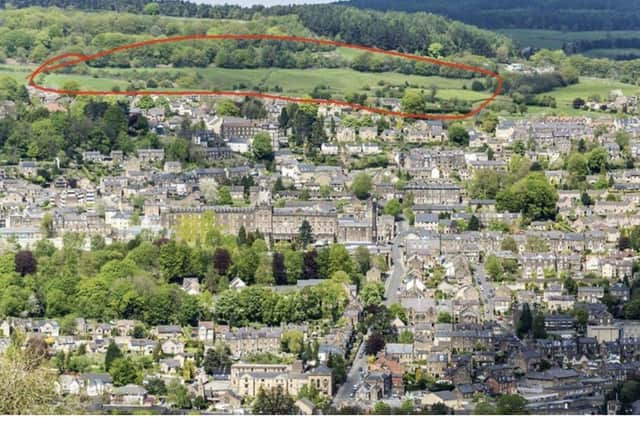Ponds at controversial 400-home Derbyshire hillside housing estate could pose “threat to life”
and live on Freeview channel 276
A document, written by a chartered civil engineer hired by Derbyshire County Council, details the potential risk from planned ponds on the 423-home Matlock Wolds housing application.
The scheme, from William Davis Homes, was submitted to Derbyshire Dales District Council back in November 2018 and is still awaiting a decision due to the vast amount and detail of information required to assess the project.
Advertisement
Hide AdAdvertisement
Hide AdThis includes flood risk assessment and mitigation for hundreds of homes on a steep hill above a town infamous for flooding from surrounding rivers and from water running off the hillside.


Now a report, newly obtained by the Save Our Wolds campaign group, details that the potential risk to life linked to the planned ponds “does not appear to have been assessed”.
The report, written by a chartered civil engineer hired by the county council in July, says the planned ponds on the 423-home Wolds site are “quite large” and are upstream from a “populous area”.
It says the ponds would not be covered by the Reservoirs Act because, individually, the planned ponds would contain less than 10,000 cubic metres of water, but still need to be analysed for risk, due its hillside position above a town.
Advertisement
Hide AdAdvertisement
Hide AdThe report says: “Holding water at this elevated level will increase potential consequences downstream. This is not helped by the fact that the most upstream ponds are also the largest.
“Whilst the area isn’t necessarily steep local to the development, the gradients downstream are understood to be quite steep.”
It says the developers need to consider “cascade failure” along with “a breach evaluation of inundation area, flow depths and flow velocities” assessing the impact on “critical infrastructure, property and life”.
The report says the planned ponds are designed to withstand 100-year floods with a 40 per cent additional rate of water to account for climate change.
Advertisement
Hide AdAdvertisement
Hide AdHowever, it says “the nature of these drainage ponds is that many of these are likely to exceed their design flows within a generation”.
The report details: “Based on consequence, and volume of water, potential energy and downstream population, we would expect these ponds to pose a threat to life and would fall under flood category A if they were subject to the Reservoirs Act.
“This requires the probable maximum flood to be assessed and ensure the integrity of the structures to pass this flood.
“We believe it would be prudent for the developer to provide supporting evidence on this item, that they have considered how extreme floods will be routed and the potential impact on the pond structures and what mitigation has been put in place to prevent the ponds failing releasing the stored volumes of water.”
Advertisement
Hide AdAdvertisement
Hide AdThe report continues: “It is not about preventing any impacts of flooding downstream from these extreme events, but about preventing those extra over-impacts due to a release of the additional stored water (from the ponds).”